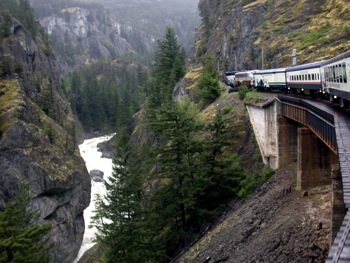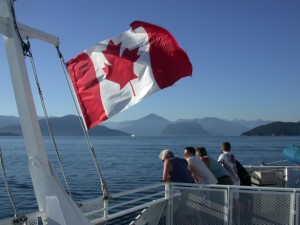Transportation within Canada
Getting around in Canada
Whether you just want to get across town or across the country, you’re going to need to know your transportation options within Canada.

City transit
The larger the Canadian city, the more easy and efficient you’ll find its transit system. Vancouver, Toronto and Montreal have particularly commendable transit systems that work well for tourists and locals alike. Per-trip costs are in the $3 range, but you can save by buying a discount pass as soon as you arrive. If you’re travelling to smaller centres, don’t expect to rely on transit exclusively.
Taxis and limos
Taxis are neither plentiful nor inexpensive in Canada. You will always be able to grab a cab at major transportation centres and hotels, but it can be challenging to hail a cab on the street and if you phone ahead, you should expect at least a 10- or 15-minute wait. Taxis typically charge by distance and wait time; limos and car-hires charge by the hour or flat-rate.
Rental cars
There’s a broad range of rental car companies in Canada and a car is highly recommended when you are planning to travel outside of urban centres. Be aware that rental costs can be significantly higher in remote locations. When booking a rental car, be sure to ask about insurance coverage and always check with your credit card company in advance to find out precisely what protection they offer–it may not be as comprehensive as you think it is, especially when you’re abroad.
Buses
Greyhound Canada will get you to all the big cities and some surprisingly remote locations too. The company offers discounts for seniors and students, but be sure to put a value on your time when figuring out if bus travel makes sense for you: Canada is a huge country and you don’t want to waste precious vacation days crammed in the back of a bus. Consider flying between major centres and then taking the “rolling dog” to the smaller towns on your itinerary. There are, as well, specialized long-haul bus companies that offer extensive service in specific regions of the country such as Vancouver Island and Whistler, BC.
Planes
Canada is so huge that if you’re wanting to cover a lot of ground in a short period of time, you’re going to have to fly. As a rule, flying east-west in Canada is much cheaper than flying north-south. With a bit of advance planning, you can usually find a good fare between major cities along the Canada-U.S. border, but brace yourself for the typically steep cost of a flight to Canada’s North. Besides the major carriers, there are lots of regional carriers that travel popular tourist routes such as Vancouver-Victoria, sometimes by float plane or helicopter.
Even for born-and-bred Canadians, there’s something romantic about train travel in Canada. More than 100 years ago, the railroad unified the country both literally and figuratively, and it helped put Canada on the tourism map. Today, rail travel is enjoying something of a comeback, especially on inter-urban routes such as the Toronto-Montreal corridor. And a cross-Canada trip on VIA Rail‘s “The Canadian” or a summer crossing of the Rocky Mountains aboard the Rocky Mountaineer is high on the bucket-list of visitors and locals alike.

Ferries and boats
There are three coasts and plenty of lakes and rivers in Canada. From aqua-buses, ferries and cruise-ships, to houseboats, Haida canoes and paddle-wheelers, you’ll find plenty of scenic ways to enjoy Canada from “see” level.
Related posts:
>>Train travel in Canada: Planning tips